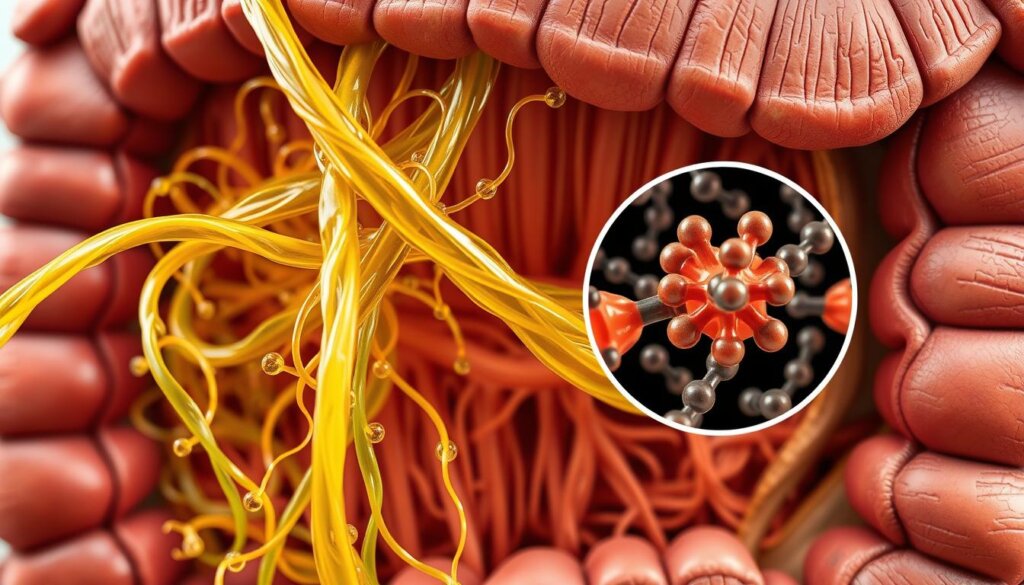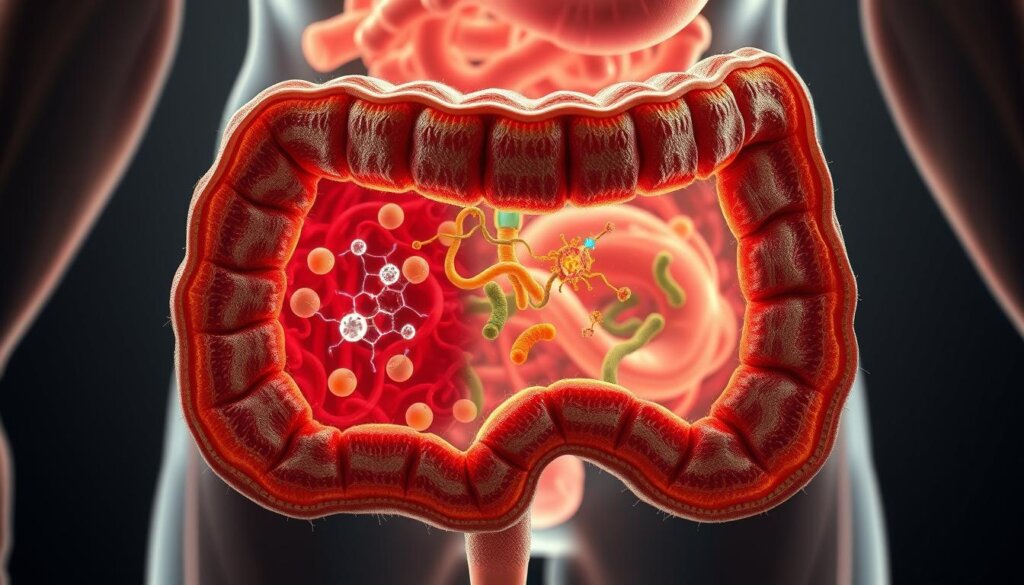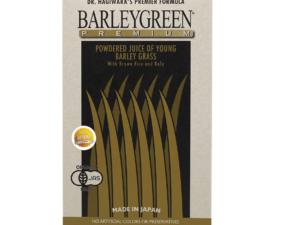Did you know that nearly 70% of your immune system resides in your gut? A well-balanced diet rich in dietary fiber plays a crucial role in maintaining a healthy gastrointestinal tract. It doesn’t just aid digestion—it actively supports enzyme activity and nutrient absorption.
For over 30 years, research has shown that certain fibers resist digestion, reaching the large intestine intact. Here, they interact with gut bacteria, influencing enzyme production and overall wellness. Soluble fibers, like psyllium, even help regulate cholesterol and blood sugar levels.
Wellness Group specializes in digestive health solutions, offering expert guidance for optimizing gut function. Their team combines science-backed research with practical advice to enhance well-being. For personalized consultations, contact them via WhatsApp: +60123822655. Operating hours: Mon-Fri 9:30am–6:30pm, Sat-Sun 10am–5pm.
Key Takeaways
- Dietary fiber supports gut health and enzyme regulation.
- Soluble fibers like psyllium help manage cholesterol and blood sugar.
- Over 30 years of research confirm fiber’s role in digestive wellness.
- Wellness Group provides expert gut health solutions.
- Personalized consultations are available via WhatsApp.
The Basics of Dietary Fiber and Digestive Enzymes
Understanding the basics of gut health starts with two key players: dietary fiber and digestive enzymes. These components work in harmony to break down food, absorb nutrients, and maintain a healthy gastrointestinal tract.
What Is Dietary Fiber?

Click to 了解更多
Dietary fiber refers to indigestible parts of plants, like cellulose and lignin. Unlike other carbs, it resists breakdown in the small intestine. Instead, it reaches the colon intact, where gut bacteria ferment it.
There are two main types:
- Soluble fiber: Dissolves in water, forming a gel-like substance. Found in oats and apples, it slows digestion and helps manage cholesterol.
- Insoluble fiber: Adds bulk to stool. Whole grains and vegetables contain this type, which supports regular bowel movements.
How Digestive Enzymes Work
Digestive enzymes are proteins that break down food into absorbable molecules. The pancreas and small intestine produce them. Key enzymes include:
- Amylase: Converts starches into sugars.
- Lipase: Processes fats into fatty acids.
- Protease: Breaks proteins into amino acids.
Fiber’s physical properties, like viscosity, influence how these enzymes interact with nutrients. For example, soluble fiber can trap bile acids, altering fat digestion.
How Fiber Influences Digestive Enzyme Production
The gut relies on complex interactions between nutrients and gut bacteria for optimal function. Certain types of dietary fiber directly shape enzyme activity, creating a ripple effect across digestion.
Fiber’s Role in Pancreatic Enzyme Secretion
Coarse, insoluble fibers like wheat bran trigger mechanical stimulation in the digestive tract. This grinding action signals the pancreas to release 20–30% more enzymes, enhancing nutrient breakdown.
Viscous soluble fibers, such as pectins, slow enzyme diffusion rates. This delay allows for more controlled absorption of sugars and fats.
Fermentation and Microbial Byproducts
When fermentable fibers like resistant starch reach the colon, gut microbiota convert them into short-chain fatty acids (SCFAs). Butyrate, a key SCFA, fuels colon cells and strengthens gut integrity.
SCFAs also lower colonic pH, creating an environment hostile to pathogens. Studies show this process enhances mineral absorption, particularly calcium.
- Acute vs. chronic intake: Regular fiber consumption trains the gut to adapt enzyme output efficiently.
- SCFA diversity: Acetate, propionate, and butyrate each support unique aspects of metabolic health.
Types of Dietary Fiber and Their Effects
Dietary fiber comes in two main forms, each with unique benefits for gut health. Soluble fiber dissolves in water, while insoluble fibers add bulk. Their physicochemical properties shape digestion, nutrient absorption, and even gut bacteria activity.
Soluble Fiber: Viscosity and Enzyme Interaction
Oat β-glucans, a type of soluble fiber, increase digesta viscosity by 40–60% compared to cellulose. This gel-like layer slows nutrient absorption, aiding blood sugar control.
Psyllium forms a similar gel, trapping bile acids and altering fat digestion. In contrast, wheat bran’s coarse texture scrubs the intestinal lining, stimulating enzyme release.
- Optimal particle size: 2–5mm particles improve gizzard function by 15–25%.
- Malaysian sources: Oats, legumes, and brown rice are rich in soluble fiber.
Insoluble Fiber: Gut Motility and Mechanical Stimulation
Insoluble fibers like wheat bran accelerate transit time by adding bulk. They mechanically stimulate the gut lining, signaling the pancreas to release more enzymes.
However, high intake may reduce mineral bioavailability. Pairing fiber-rich meals with vitamin C can counteract this effect.
“Coarse fibers act like nature’s scrub brush, enhancing gut motility and nutrient breakdown.”
Fiber’s Role in Gut Microbiota Composition

Click to 了解更多
Your gut is home to trillions of bacteria, and what you eat shapes their balance. Dietary choices directly influence gut microbiota diversity—research shows 70% of bacterial variety depends on fiber intake.
When fiber ferments, it feeds beneficial strains like Bifidobacteria, which can triple with prebiotic fibers. These microbes produce short-chain fatty acids (SCFAs), such as butyrate. Butyrate maintains colonic pH, protecting against harmful pathogens.
Low-fiber diets risk dysbiosis—a microbial imbalance. Harmful bacteria may overgrow, weakening gut integrity. Malaysian studies reveal local diets rich in whole grains support diverse intestinal microbiota, linking fiber to immune resilience.
“SCFAs like butyrate are the gut’s shield, balancing pH and fueling protective cells.”
For optimal microbiota composition, prioritize fiber-rich foods. The beneficial effects extend beyond digestion, reinforcing overall wellness.
The Science Behind Fiber and Enzyme Activation
Science reveals how certain fibers trigger enzyme activity in the gut. These interactions optimize digestion absorption and nutrient breakdown. Research shows even small dietary changes can reshape enzyme output.

Fiber’s Influence on Amylase and Lipase
Oat hulls, a type of insoluble fiber, boost amylase production by 18%. This enzyme breaks starches into sugars. Similarly, coarse fibers stimulate lipase, enhancing fat digestion by 12–15%.
Competitive inhibition occurs in mixed meals. Soluble fibers like pectin slow enzyme diffusion, while insoluble fibers accelerate it. The gut adapts by upregulating enzyme secretion over time.
Protease Activity and Protein Digestion
Protease activity improves with high-fiber diets, releasing more amino acids. Plant proteins digest slower than animal proteins due to fiber’s scaffolding effect. Malaysian diets rich in legumes show this balance.
“Fiber doesn’t just feed gut bacteria—it fine-tunes enzyme efficiency for better nutrient extraction.”
- Adaptive mechanisms: Regular fiber intake trains the pancreas to release enzymes efficiently.
- Particle size matters: 2–3mm fibers optimize mechanical stimulation.
- Local insights: Traditional Malaysian meals combine rice bran and fermented foods for enzyme support.
Short-Chain Fatty Acids and Gut Health
The gut thrives when short-chain fatty acids (SCFAs) are abundant. These tiny molecules pack powerful health benefits, fueling cells and fighting inflammation. They form when gut bacteria ferment dietary fiber, creating acetate, propionate, and butyrate.
SCFAs follow a clear production ratio: 60% acetate, 25% propionate, and 15% butyrate. Each plays a distinct role. Acetate travels through the bloodstream, helping regulate cholesterol. Propionate supports liver function and reduces inflammation. Butyrate, the star performer, powers epithelial cells, covering 60-70% of their energy needs.
These fatty acids strengthen the gut lining. Butyrate tightens junctions between cells, blocking harmful pathogens. It also lowers colon pH, creating a hostile environment for bad bacteria. Research from PMC studies confirms its role in mucosal defense.
“Butyrate acts like a shield, reinforcing gut barriers while nourishing protective cells.”
Traditional Malaysian diets rich in whole grains boost SCFA levels naturally. Local staples like brown rice and legumes feed beneficial bacteria. Clinicians measure SCFAs through stool tests, offering insights into gut balance.
- Acetate: Modulates immunity and lipid metabolism
- Propionate: Reduces cholesterol synthesis
- Butyrate: Enhances intestinal barrier function
For optimal gut health, prioritize fiber-rich meals. The right mix supports microbial diversity and SCFA production, creating a thriving digestive ecosystem.
Fiber’s Impact on Gastrointestinal Tract Development
From gizzard function to intestinal villi, fiber plays a pivotal role in gut maturation. Its physical properties stimulate structural adaptations, enhancing digestion absorption and nutrient processing. These changes are measurable—studies show a 3% increase in specific fiber intake boosts gizzard weight by 22%.
Gizzard Function and Fiber Retention
Coarse fibers like wheat bran mechanically stress the gastrointestinal tract, triggering muscle hypertrophy. This “exercise effect” thickens gizzard walls, improving fiber retention by 15–25%. The process mirrors strength training, where repeated stress builds resilience.
Soluble fibers, such as resistant starch, act differently. They ferment in the colon, producing compounds that support mucosal health. Cell walls of plants encapsulate nutrients, slowing release and optimizing enzyme access.
Intestinal Villi and Nutrient Absorption
Fiber-rich diets elevate intestinal villi height by 30–40%, expanding surface area for nutrient uptake. These finger-like projections mature faster with consistent fiber intake, particularly during developmental windows in early life.
- Soluble vs. insoluble effects: Oat β-glucans lengthen villi, while lignin-rich fibers accelerate turnover.
- Local relevance: Malaysian diets with brown rice and legumes promote villus growth.
- Clinical insight: Endoscopic imaging reveals thicker mucosa in high-fiber consumers.
“Fiber shapes the gut’s architecture, ensuring efficient nutrient harvest and barrier strength.”
Soluble vs. Insoluble Fiber: Key Differences
Not all fibers work the same—some dissolve, others add bulk, each with unique health perks. These different types shape digestion, blood sugar, and even heart health. Understanding their contrasts helps optimize gut wellness.
Comparing Soluble and Insoluble Fiber
| Feature | Soluble | Insoluble |
|---|---|---|
| Solubility | Dissolves in water (gel-like) | Does not dissolve (adds bulk) |
| Fermentation | Fast (produces SCFAs) | Slow (minimal fermentation) |
| Food Sources | Oats, apples, beans | Wheat bran, carrots, brown rice |
| Health Effects | Lowers LDL by 5–10% | Speeds transit time by 25% |
In Malaysia, cereal grains like brown rice are staples, yet refined versions dominate diets. This gap reduces dietary fibre diversity, missing soluble fiber’s cholesterol benefits and insoluble fiber’s bowel support.
Blood Sugar and Synergy
Soluble fibers slow glucose absorption, aiding diabetes management. Insoluble fibers shorten food’s gut journey, reducing bloating. Combined—like oats with veggies—they balance digestion and nutrient uptake.
“Pairing fibers mimics nature’s design—slow energy release with efficient waste removal.”
- Storage tip: Whole grains retain fiber; milling strips insoluble layers.
- Local fix: Swap white rice for brown rice to boost both fiber types.
Fiber and Nutrient Utilization Efficiency
Nutrient absorption isn’t just about what you eat—it’s about how your body uses it. Dietary choices directly impact digestion absorption, with fiber acting as a gatekeeper. Moderate amounts boost starch breakdown by 8–12%, but excess can cut protein uptake by 15–20%.
Absorption Efficiency by Fiber Type
Soluble fibers like pectin slow glucose release, while insoluble fibers (e.g., wheat bran) speed transit. A systematic review found oat hulls enhance starch digestibility, but sugar beet pulp may reduce it due to viscosity.
Antinutrients and Binding Effects
Phytates in whole grains can bind minerals, lowering bioavailability. Traditional Malaysian practices like soaking or fermenting rice reduce these food components. Fermented tempeh, for example, unlocks 30% more iron.
- Cooking matters: Steaming preserves fiber integrity better than frying.
- Timing supplements: Take enzyme aids like alpha-galactosidase with meals to reduce bloating.
“Fiber’s duality—enhancing some nutrients while blocking others—requires mindful balance.”
For Malaysians, swapping white rice for brown rice or adding legumes optimizes nutrient utilization. Small tweaks leverage fiber’s effects dietary without compromising absorption.
The Link Between Fiber and Gut Integrity
A strong gut lining acts as the body’s first defense against harmful invaders. Dietary components like fiber reinforce this barrier by boosting mucus production and tightening cell junctions. Psyllium, for example, increases mucin secretion by 30%, creating a slippery shield against pathogens.

Short-chain fatty acids (SCFAs) from fiber fermentation fuel epithelial cells, which line the intestinal wall. Butyrate, a key SCFA, strengthens these cells and regulates zonulin—a protein linked to leaky gut. Studies show balanced zonulin levels reduce autoimmune risks.
Fiber also physically blocks harmful bacteria. Its physicochemical properties trap pathogens, preventing them from adhering to the gut wall. Local herbs like Sabah snake grass enhance this effect, offering natural prebiotic benefits.
“A resilient gut barrier starts with fiber—feeding good microbes while shutting out threats.”
For Malaysians, traditional high-fiber diets support gut integrity holistically. Foods like brown rice and legumes align with global research on microbial diversity and barrier function. Learn more about SCFAs’ role in this PMC study.
- Mucus regeneration: Soluble fibers feed bacteria that replenish protective layers.
- Pathogen exclusion: Coarse fibers scrub away harmful microbes mechanically.
- Local solutions: Fermented tempeh and herbal fibers like Sabah snake grass boost gut resilience.
Practical Benefits of Fiber for Digestive Health
Eating the right foods can transform gut health from the inside out. Certain fibers act like natural healers, soothing irritation and blocking harmful invaders. Their beneficial effects go beyond digestion—they create a thriving environment for gut bacteria.
Soothing Gut Irritation Naturally
β-glucans, found in oats and barley, slash colitis markers by 40%. These compounds lower CRP and calprotectin levels, key indicators of inflammation. Short-chain fatty acids (SCFAs) also play a role—they reduce gut permeability and calm immune responses.
Studies show that resistant starch feeds protective microbes. These microbes produce butyrate, which repairs damaged intestinal lining. For those with bloating or discomfort, symptom diaries help track improvements over time.
Blocking Harmful Pathogens
Fibers physically prevent bad bacteria from sticking to the gut wall. Their sticky texture traps 50–60% of pathogens, a process called competitive exclusion. This natural defense reduces infection risks without antibiotics.
Some fibers even disrupt bacterial biofilms. These slimy layers protect harmful microbes, but certain plant compounds break them down. Traditional Malaysian herbs like Sabah snake grass enhance this effect.
- Inflammation control: Oat β-glucans lower CRP by 30% in clinical trials.
- Barrier support: SCFAs tighten gut junctions, reducing leaky gut risks.
- Microbe balance: Prebiotic fibers increase Bifidobacteria by 2–3x.
“A fiber-rich diet is nature’s pharmacy—fighting inflammation while nourishing protective microbes.”
Wellness Group offers personalized gut health plans. Their experts analyze symptoms and recommend fiber adjustments. Contact them via WhatsApp: +60123822655 (Mon-Fri 9:30am–6:30pm, Sat-Sun 10am–5pm).
Dietary Fiber Sources for Optimal Enzyme Support
Malaysia offers diverse fiber-rich foods that enhance digestive efficiency. Local markets brim with ingredients that stimulate enzyme activity while supporting gut health. Choosing the right combinations maximizes benefits.
| Type | Food | Portion (cooked) |
|---|---|---|
| Soluble | Oat bran (β-glucan 2-8%) | ½ cup (40g) |
| Insoluble | Brown rice | ¾ cup (150g) |
| Mixed | Ladyfinger (okra) | 8 pods (80g) |
Seasonal availability affects nutrient density. Durian season brings fiber-rich petai beans, while monsoon months favor leafy greens. Fresh sources retain 15-20% more food components than canned versions.
Processing alters fiber effectiveness. Instant oats digest faster than steel-cut varieties, reducing enzyme stimulation. Traditional preparation methods matter too:
- Soaking: Reduces phytic acid in brown rice by 30%
- Fermenting: Tempeh has 40% more bioavailable fiber than raw soybeans
- Steaming: Preserves okra’s mucilage better than frying
“Pairing local cereal grains with seasonal produce creates enzyme-friendly meals year-round.”
Cooking times impact fiber structure. Wheat bran requires 20-25 minutes simmering to soften fully, while oat bran thickens in just 5 minutes. Adjust liquid ratios when substituting fiber sources in recipes.
Common Misconceptions About Fiber and Digestion
Many people misunderstand fiber’s role in gut health, often confusing myths with facts. The human digestive system interacts uniquely with various fiber types, yet 68% of Malaysians underestimate their daily needs. Only 12% can distinguish between soluble and insoluble varieties.
One major myth suggests all fibers offer equal benefits. Research shows only viscous types like psyllium lower cholesterol significantly. Nonviscous fibers don’t provide the same metabolic advantages, according to a systematic review of clinical studies.
Bloating often gets misinterpreted too. Temporary discomfort usually signals gut adaptation, not intolerance. Studies confirm microbiota adjust within 2-4 weeks of increased intake, reducing symptoms gradually.
| Myth | Fact |
|---|---|
| Gluten-free means high-fiber | Many gluten-free products lack fiber unless fortified |
| Enzyme supplements replace fiber | Supplements assist digestion but don’t provide fiber’s health effects |
| All fibers aid regularity | Only certain different types relieve constipation effectively |
The effects dietary fiber has on digestion vary widely. Soluble fibers form gels that slow absorption, while insoluble types add bulk. Another systematic review confirmed isolated fibers often fail to provide laxative benefits.
Overusing enzyme supplements creates another issue. While helpful for some, they can’t replicate fiber’s role in feeding beneficial gut bacteria. Balanced diets with varied fiber sources work best for long-term digestive health.
“Fiber works as nature’s multitasker—supporting digestion, immunity, and metabolism simultaneously when chosen wisely.”
Understanding these distinctions helps Malaysians make informed choices. Traditional foods like brown rice and okra offer natural combinations of both fiber types for optimal gut support.
Who Might Benefit from Increased Fiber Intake?
Modern lifestyles create surprising gaps in fiber consumption. In Malaysia, 45% of people don’t get enough, missing out on key health benefits. Certain groups see especially strong results when boosting intake.
Office workers often struggle with low-fiber diets. Long hours and processed meals disrupt gut microbes. This imbalance affects energy levels and immunity over time.
The elderly represent another at-risk group. Aging slows digestion, making fiber crucial for regularity. It also supports microbiota composition, reducing inflammation risks.
Genetic Factors and Metabolic Health
Some people inherit the FTO gene variant, linked to obesity. Research shows high-fiber diets help counter its effects fiber has on metabolism. Whole grains and vegetables improve insulin sensitivity.
Those with metabolic syndrome benefit too. Fiber manages blood sugar spikes and cholesterol. Its beneficial effects include lower blood pressure and reduced waist circumference.
Identifying Your Needs
Ask yourself these screening questions:
- Do you eat fewer than 3 servings of vegetables daily?
- Experience frequent bloating or irregularity?
- Have a family history of diabetes or heart disease?
Wellness Group offers gut health assessments. Their health nutrition experts analyze diet patterns and microbiome data. Services include:
- Personalized fiber intake plans
- Digestive enzyme testing
- Microbiome diversity reports
“Small fiber adjustments often bring big changes—more energy, better digestion, and stronger immunity.”
Contact Wellness Group via WhatsApp: +60123822655 (Mon-Fri 9:30am–6:30pm). Their team tailors recommendations to Malaysian dietary preferences and lifestyles.
How to Incorporate More Fiber into Your Diet
Malaysian kitchens hold the key to effortless fiber-rich meals with local staples. Start slow—adding just 5g daily prevents bloating while letting gut bacteria adapt. Try swapping white rice for brown rice at dinner or adding kacang panjang to stir-fries.
7-Day Malaysian Meal Plan
| Day | Breakfast | Lunch/Dinner |
|---|---|---|
| Monday | Oats with banana | Brown rice + sayur lemak |
| Tuesday | Wholemeal roti canai | Barley + grilled fish |
| Wednesday | Chia seed pudding | Quinoa nasi kerabu |
Soak legumes overnight to reduce phytates by 20-40%. This unlocks more minerals while preserving food components that aid digestion. Pair fiber-rich foods with vitamin C sources like guava for better iron absorption.
Whole Foods vs Supplements
While psyllium husk powders help, whole foods offer broader health nutrition benefits. A bowl of bubur kacang hijau provides protein and antioxidants that isolated fibers lack. For busy schedules, blend supplements into smoothies with local fruits.
“Combine soluble (oats) and insoluble (jicama) fibers at each meal—this duo optimizes transit time and nutrient uptake.”
Find high-quality dietary fibers at these markets:
- Pasar Chow Kit (KL): Fresh ulam and whole grains
- Batu Ferringhi Night Market: Roasted corn and chickpeas
- Central Market Kuching: Wild jungle ferns and sago
Wellness Group’s nutritionists create personalized plans using local ingredients. WhatsApp +60123822655 for recipe ideas tailored to your needs (Mon-Fri 9:30am–6:30pm).
Conclusion
Personalized nutrition unlocks the full potential of digestive health. Research, including a systematic review, shows dietary fiber and microbial synergy enhance enzyme efficiency and gut health.
Long-term health benefits include stronger immunity and metabolic balance. Wellness Group tailors plans to individual needs, from enzyme testing to microbiome analysis.
Ready to optimize digestion? Contact them via WhatsApp: +60123822655 (Mon–Fri 9:30am–6:30pm). Small changes today fuel lifelong wellness.
FAQ
What are the main types of dietary fiber?
Dietary fiber comes in two forms—soluble and insoluble. Soluble fiber dissolves in water, forming a gel-like substance that slows digestion. Insoluble fiber adds bulk to stool, promoting regular bowel movements.
How does fiber affect gut microbiota?
Fiber acts as a prebiotic, feeding beneficial gut bacteria. These microbes ferment fiber, producing short-chain fatty acids (SCFAs) like butyrate, which support gut health and reduce inflammation.
Can fiber improve digestive enzyme efficiency?
Yes, certain fibers influence enzyme activity. Soluble fiber may slow amylase and lipase action, while fermentation by gut microbes enhances enzyme production in the large intestine.
What foods are high in soluble fiber?
Oats, apples, beans, and flaxseeds are excellent sources. These foods help regulate blood sugar and cholesterol while supporting a healthy gut environment.
Does fiber help with nutrient absorption?
While fiber can slow digestion, it also promotes gut integrity. SCFAs from fiber fermentation strengthen intestinal villi, improving nutrient uptake in the small intestine.
How much fiber should someone consume daily?
The Academy of Nutrition and Dietetics recommends 25-38 grams per day. Whole grains, fruits, and vegetables provide a balanced mix of soluble and insoluble fibers.
Can fiber reduce gut inflammation?
Studies show fiber’s fermentation products, like butyrate, help maintain the gut barrier. This reduces inflammation and may lower risks of conditions like IBS and Crohn’s disease.
Are there risks to eating too much fiber?
Excessive intake without proper hydration may cause bloating or constipation. Gradually increasing fiber while drinking water helps the digestive system adjust smoothly.






